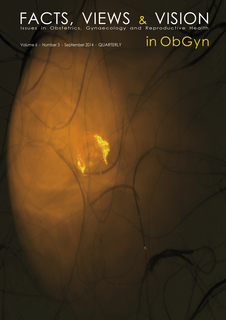Cumulative live birth rate and assisted reproduction: impact of female age and transfer day
IVF, ICSI, ART, cumulative live birth rate, female age, transfer day
Published online: Sep 30 2014
Abstract
Background: Many studies on assisted reproductive technology examine live birth rate per cycle. However, after a cycle fails, couples often want to know what their chances are of having a live birth if they continue treatment. From a patients’ perspective, the cumulative probability of live birth is more informative.
Materials and Methods: This study includes patients who underwent fresh, frozen and non-donor ICSI cycles at our IVF unit between 2006-2012. Patients were divided into two groups; Group 1 represented those who underwent only Day 5 transfers, Group 2 represented only Day 3 transfers. Patients who underwent both were excluded. Cycles were analyzed until the first live birth or the end of the 3rd cycle. Using Kaplan-Meier analysis, we estimated the cumulative live birth rates for each group and according to female age.
Results: The mean age for Group 1 was significantly lower than for Group 2. After 3 cycles, Group 1’s CLBR was 79% versus 66% in Group 2. When analyzing the live births by age and group, there was a significant difference in the CLBR after 3 cycles with the women less than 35 years having the highest CLBR and the women 40 years or older having the lowest CLBR.
Conclusion: In women less than 35 years, excellent CLBR can be achieved irrespective of the transfer day. For women 40 years and above, better results of CLBR are observed with Day 5 transfers. Our findings may impact the counseling of couples considering IVF treatment.



